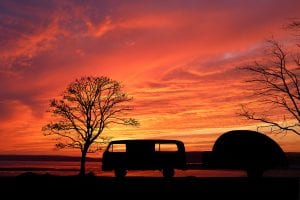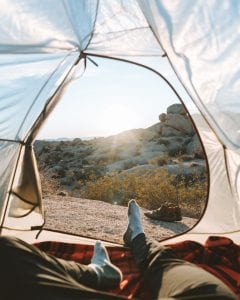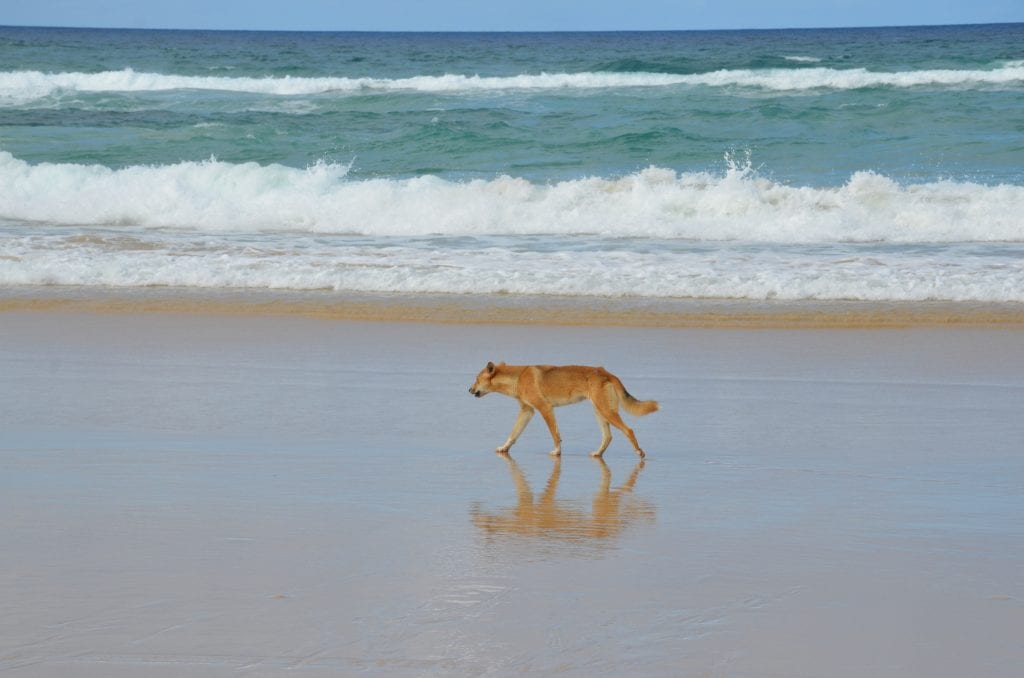Ecotourism, National Parks, Nature Refuges, State Forests
Shutdown: A Break for Nature
 Queenslanders have long enjoyed exploring our many and varied national parks and state forests. Australians from other states typically migrate to Queensland during the winter months and popularity has surged in the last decade. However, many have had their trips cut short or cancelled from March in response to the COVID-19 pandemic. The impact of the decision to close national parks and their camping grounds to visitors is significant, with 470 camping areas closed across the state.
Queenslanders have long enjoyed exploring our many and varied national parks and state forests. Australians from other states typically migrate to Queensland during the winter months and popularity has surged in the last decade. However, many have had their trips cut short or cancelled from March in response to the COVID-19 pandemic. The impact of the decision to close national parks and their camping grounds to visitors is significant, with 470 camping areas closed across the state.
Whilst this has had profound effects on park explorers, there have been many positives for national parks. Despite chronic under-resourcing, the pause in visitation has given Queensland park rangers some much needed breathing space to re-assess management priorities. It has freed up rangers from focusing mainly on maintaining visitor facilities and management issues; instead, they can now focus efforts on the parks’ significant values and resources, which are the key reason for their gazettal. Rangers in some national parks have been able to spend time on critical feral pest and weed management, particularly where there have been devastating fires. With the rains following fire and drought, there has been an explosion of weeds in many regions including South East Queensland and Western Downs. Whilst the national parks in these areas have come alive following the recent wet season and have never looked greener, the parks services will struggle to control weeds as this will require resourcing that is already in short supply. Rangers are also focused on fire hazard reductions with cool burns and assessing Indigenous burning regimes.
The extended drought and devastating fires have also taken a toll on walking tracks which have been blocked with fallen trees and eroded, and in some parks washed away from intense rainfall. The temporary halt in foot traffic along tracks has given the opportunity for regeneration, particularly in areas where people go off-track to take a short-cut. This frequently occurs on tracks that have switch-backs designed to give an easier walking grade.
Areas around campgrounds typically have highly compacted soils. Again, removal of visitor traffic has given a chance for regeneration, especially for native grasses around camp areas which flourish in less compacted conditions. The absence of campers also gives rangers the opportunity to remove dangerous tree-hazards in the vicinity. Camping sites where septics release waste to the ground now have the opportunity for natural processes to help compost waste. Some day-use areas can be rotated, allowing the more heavily-used sites to be temporarily closed to allow for recovery and regeneration.
Fauna is also affected. Dingos and other wildlife have been forced to return to self-sufficiency as human food is no longer available at the campsites. The quiet atmosphere around parks coupled with regeneration has resulted in a noticeable increase in sightings by rangers of fauna – from a diverse range of bird species to pademelons and koalas. And the closure of high-use areas has allowed some ecosystems in these iconic sites to recover.
Four-wheel driving on park beaches has also been restricted giving wildlife and tracks a break. And K’gari (Fraser Island), part of Great Sandy National Park, had a break from the 10,000 to 14,000 people who normally visit the island over the Easter period. Interestingly, dingo sightings have decreased markedly along the coastal areas frequented by large numbers of campers and day-visitors prior to the park closures. Dingoes have moved inland away from these areas; typically they would be closer looking for food and scraps left behind by visitors.
This breather from visitors allows ecosystems to recover, and rangers to focus on fire hazard, weed, pest management and track maintenance. Because of this opportunity, when you return to visit a national park, you are likely to notice increased bird life and sightings of native fauna. Many rangers have noted their return to highly used areas, encouraged by the overall quiet and lack of disturbance. NPAQ hopes visitors will take the opportunity to explore and appreciate our diverse national parks as part of a safe, inexpensive holiday, demonstrating how these special, unique areas are valued. This also builds the case for increased resourcing of park management.
In response to the collapse of tourism, the Queensland Government has waived commercial operators’ park fees to help with the industry’s recovery. Yet, national parks need every dollar they can get. At the time of writing, Queensland national parks will be open from 12th June, including campgrounds, walking trails and swimming holes according to the government’s website: https://www.covid19.qld.gov.au/government-actions/roadmap-to-easing-queenslands-restrictions.
When camping re-opens NPAQ requests all campers do the right thing and book campsites (on line https://parks.des.qld.gov.au/experiences/camping/camping_bookings.html or by phone 13 74 68). If you can, spending a little extra cash in the regions can also to help country towns recover faster.
Are you keen to foster a love of national parks in your kids or grandkids? NPAQ’s Kids in National Parks brochures are a great place to start www.npaq.org.au/kids-in-national-parks/. And NPAQ is seeking new members – please join www.npaq.org.au/support-us/become-a-member/.



